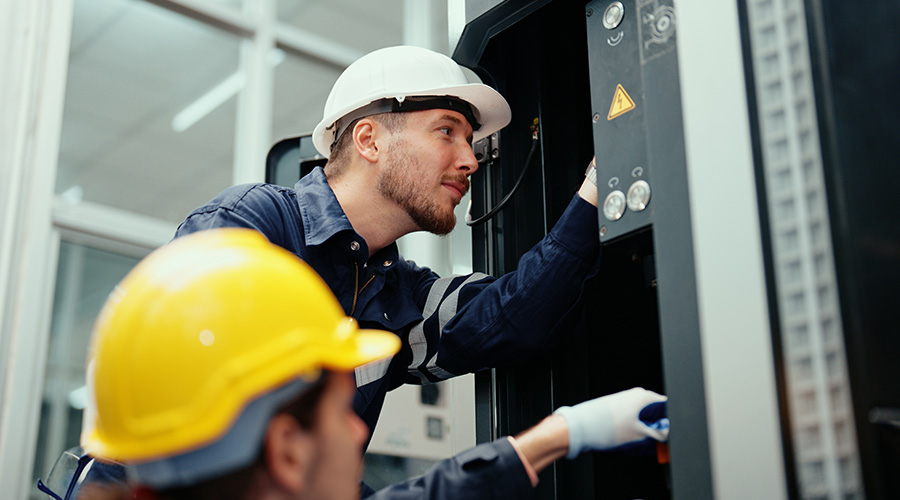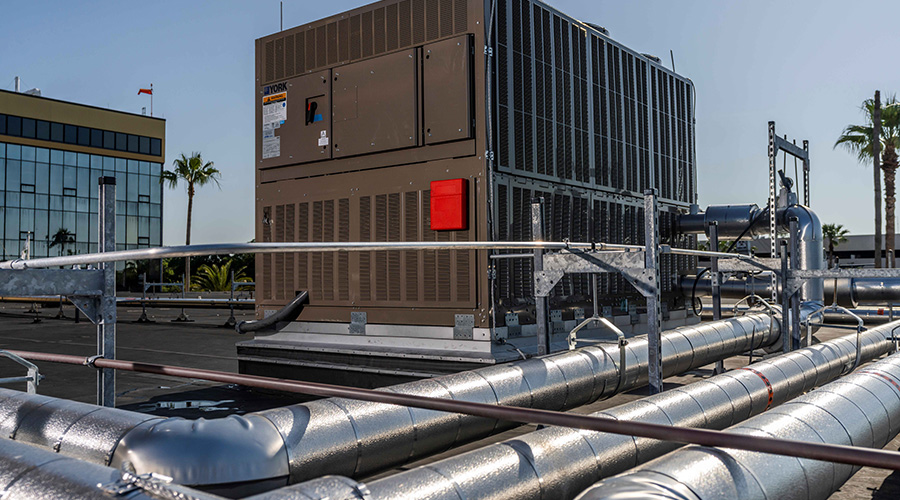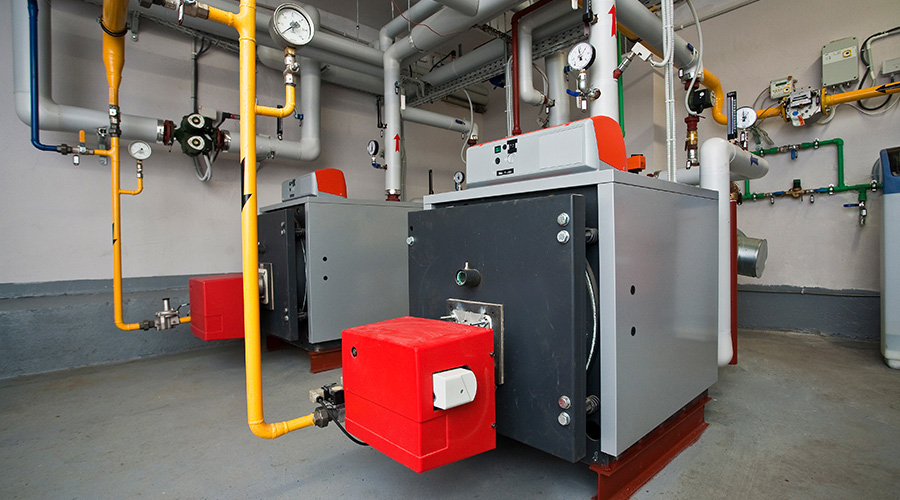Variable Refrigerant Flow HVAC Systems Can Save Energy, Money
Variable refrigerant flow systems have been used for the better part of three decades in Europe and Asia. While clearly not as common in North America, the design has been catching on — mostly for its ability to respond to fluctuations in space load conditions. Because of this, it excels at saving energy and money during part-load system use. But that's not to say that it's perfect for every building or every climate.
There are two basic systems, air-cooled and water-cooled, and a simple VRF system consists of an outdoor condensing unit and multiple indoor evaporators. The condenser and evaporators are connected by a complex set of oil and refrigerant pipes, all governed by individual thermostat controls.
Ramez Affify, principal at E4P consulting engineering, has worked extensively with VRF systems, including ASHRAE subcommittees addressing variable refrigerant flow, and notes that basic questions need to be asked before installing a VRF system.
"There are major decisions in the beginning of each project to choose the most suitable HVAC system for a building," Affify says. "When VRF are considered, the very first question is: Will the VRF units be air cooled or water cooled?"
If they are air cooled, Affify says, exterior space is required for installation of the condenser unit. Furthermore, the space/site selected for installation has to be away from windows, accessible for maintenance, and able to support the weight of the units.
In one case, "the height of an exterior [air-cooled] VRF unit caused the neighbor, which was an adjacent restaurant, to complain because they said the unit blocked their view," Affify says. "Lesson learned is to think ahead before installing a 6-foot outdoor VRF section, especially in low rise communities."
He further notes that architectural enclosures can be considered to at least hide the condenser units.
If a water-cooled VRF system is used, Affify says, water source units that help comprise the system can be placed in small closets. With both air- and water-cooled units, a feasible path to route the refrigerant pipes needs to be identified.
One final challenge when specifying VRF systems is providing a separate outside air supply to each indoor unit to comply with ASHRAE Standard 62.1 and building codes. For larger buildings, that means a separate outside air fan and control system is usually required, and in humid climates, providing preconditioned outside air to each indoor unit helps ensure good indoor air quality.
Specification Considerations
Affify is careful to note that a VRF system isn't an off-the-shelf solution. It generally requires the aid of a design engineer, who should review the load profile for the building so each outdoor section is sized based on the peak load of all indoor sections at any given time; then the outdoor unit can be specified. Designing a VRF by selecting the outdoor unit first, Affify says, is a sure way to end up with an oversized system.
VRF is appealing for reasons beyond energy savings. After all, the systems can simultaneously heat and cool separate spaces in the same building. VRF systems also can vary compressor speed to meet load condition and have quieter operation than direct exchange systems.
But VRF isn't suitable for all applications. There is a limitation on the indoor coil maximum and minimum dry- and wet-bulb temperatures, which makes the units unsuitable for 100 percent outside air applications, especially in hot and humid climates.
The cooling capacity available to an indoor section is reduced at lower outdoor temperatures. This limits the use of the system in cold climates to serve rooms that require year-round cooling, such as server rooms.
But in many cases, VRF systems work well. Affify references a recent VRF installation in the desert southwest where, shortly after installation, the area experienced a heat wave where ambient outdoor temperatures reached 120F, well exceeding the manufacturer's recommended range.
"To our great pleasure, the system functioned and cooled the building during [those] hot times," Affify said.
Related Topics:













